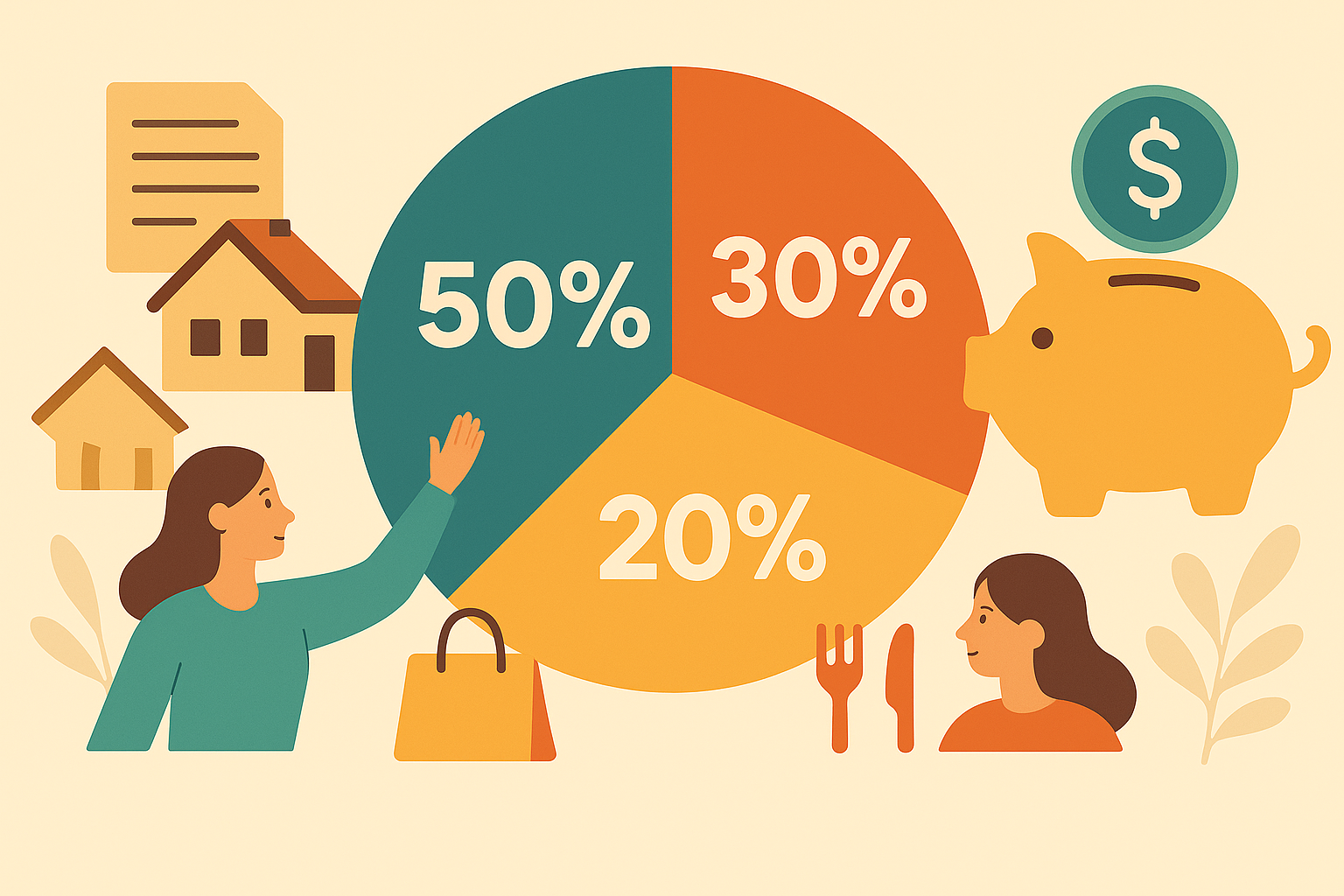You know that sinking feeling when you’re at the grocery store checkout and the total is $30 higher than it was just six months ago? Yeah, that’s inflation doing its thing, and it’s probably keeping you up at night wondering if your savings are actually worth anything anymore.
I get it. You’ve been doing everything “right” – saving money, being responsible, maybe even feeling pretty good about that growing balance in your checking account. But then reality hits: that money isn’t stretching as far as it used to, and you’re starting to panic about your financial future.
Here’s the thing – you’re not crazy, and you’re definitely not alone. Inflation is real, it’s happening right now, and it’s quietly eating away at your purchasing power every single day. But before you start stuffing cash under your mattress, let me share some practical inflation tips that can actually help you fight back and protect your wealth.
The Wake-Up Call You Need to Hear
Picture this: You’ve got $10,000 sitting in your regular savings account, earning maybe 0.5% interest. Feels safe, right? You’re being responsible, keeping your money secure. But here’s the brutal truth – if inflation is running at 4% (which it has been), your money is losing 3.5% of its value every year.
That $10,000? In terms of what it can actually buy, it’s only worth about $9,650 after one year. And it gets worse each year you do nothing.
This isn’t about being doom and gloom – it’s about facing reality so you can do something about it. Your money is working against you right now, and the sooner you accept that, the sooner you can start fixing it.
7 Smart Inflation Tips to Shield Your Money
1. High-Yield Savings: A Smart Inflation Tip for Emergency Funds
Let’s start with the easiest fix. If you’re still banking with that big traditional bank paying you 0.01% interest (yes, some still do that), you’re essentially paying them to hold your money while inflation destroys it.
Online banks like Marcus by Goldman Sachs, Ally, Capital One 360, or SoFi are offering 3-4% APY right now. Moving your emergency fund takes about 15 minutes and can literally save you hundreds or thousands of dollars in lost purchasing power.
Think about it this way: if you have $20,000 in emergency savings, the difference between 0.01% and 4.5% is about $700 per year. That’s not nothing – that’s a nice vacation or several months of groceries. The process is surprisingly straightforward, and most online banks have user-friendly interfaces that make the transition seamless.
The beauty of high-yield savings is that your money remains completely liquid – you can access it instantly for emergencies while still earning a return that at least fights inflation. Unlike CDs or other time deposits, there are no penalties for withdrawals, and most high-yield accounts have no minimum balance requirements. Some even offer additional perks like ATM fee reimbursements or budgeting tools.
While 3-4% might not completely beat inflation during the highest spikes, it’s infinitely better than letting your money sit in a checking account earning nothing. Think of this as your foundation – the safe money that needs to be accessible but shouldn’t be losing value to inflation.
2. I-Bonds: Your Government-Backed Inflation Fighter
Here’s something most people don’t know about: I-Bonds are literally designed to protect you from inflation. The government issues these bonds, and they adjust their interest rate every six months based on the Consumer Price Index.
When inflation was really high in 2022, I-Bonds were paying over 9% annually. Even now, they’re offering rates that actually keep up with rising prices. You can buy up to $10,000 worth per year through TreasuryDirect.gov, and while you can’t touch them for the first 12 months, they’re about as safe as investments get.
Think of I-Bonds as your “set it and forget it” inflation insurance. The beauty is that they’re backed by the full faith and credit of the U.S. government, so you get both safety and inflation protection in one package. Many financial advisors recommend making I-Bonds a core part of any inflation-hedging strategy.
The structure is simple: I-Bonds pay a fixed rate plus an inflation adjustment that changes every six months. So if inflation goes up, your return goes up automatically. If inflation goes down, you’re still protected by the fixed rate component. You can hold I-Bonds for up to 30 years, and after the first year, you can cash them out anytime (though you’ll lose the last three months of interest if you cash out before five years).
Here’s a pro tip: you can actually buy an additional $5,000 in paper I-Bonds using your tax refund, bringing your total annual limit to $15,000. For couples, that’s potentially $30,000 per year in inflation-protected government bonds. I-Bonds are one of the few investments that guarantee to keep pace with inflation while being completely safe and backed by the U.S. government, making them deserve serious consideration in any inflation-fighting strategy.
3. TIPS Bonds: A Proven Inflation Tip for Conservative Investors
Treasury Inflation-Protected Securities (TIPS) might sound complicated, but they’re actually pretty straightforward. These are government bonds that increase in value when inflation goes up. If prices rise by 3%, so does the principal value of your TIPS.
You can buy TIPS directly from the Treasury or through a TIPS mutual fund or ETF. The government backs them, so they’re incredibly safe, and they’re specifically designed to maintain your purchasing power over time. Vanguard’s VTIP is a popular low-cost option for getting TIPS exposure.
Let’s say you buy $5,000 worth of TIPS and inflation runs at 4% for the year. Your principal grows to $5,200, plus you earn interest on top of that. Meanwhile, your friend’s $5,000 in regular savings is worth about $4,800 in purchasing power. TIPS essentially provide a mathematical hedge against inflation, adjusting automatically so you don’t have to worry about timing the market or making complex decisions.
The key difference between TIPS and I-Bonds is flexibility and scale. While I-Bonds limit you to $10,000 per year, you can buy unlimited amounts of TIPS. TIPS are also more liquid – you can sell them anytime in the secondary market, though their value will fluctuate based on interest rates and market conditions.
TIPS come in 5, 10, and 30-year maturities, giving you options based on your time horizon. The longer-term TIPS typically offer higher yields but are more sensitive to interest rate changes. For most investors, a diversified TIPS fund or ETF makes more sense than buying individual TIPS, as it spreads out the maturity dates and reduces the complexity of managing multiple bonds.
One thing to keep in mind: you’ll owe taxes on both the interest payments and the inflation adjustments each year, even though you don’t receive the principal adjustments until maturity. This makes TIPS particularly well-suited for tax-advantaged accounts like IRAs or 401(k)s.
4. Gold and Silver: A Key Inflation Tip for Portfolio Diversification
Gold and silver have been trusted stores of value for thousands of years, and there’s a good reason why people turn to precious metals during inflationary periods. When paper money loses purchasing power, gold and silver tend to maintain or increase their value because they’re tangible assets with intrinsic worth.
During the high inflation periods of the 1970s, gold prices soared from around $35 per ounce to over $850 per ounce. Silver also performed exceptionally well during this time. These metals act as a hedge because their supply is limited – you can’t just print more gold like you can with paper money.
The easiest way to get exposure to gold and silver without dealing with storage and security issues is through ETFs. SPDR Gold Trust (GLD) and iShares Silver Trust (SLV) are popular options that track the price of these metals directly. You can buy and sell them just like stocks in your regular brokerage account.
Fair warning: precious metals can be volatile and don’t pay dividends or interest. Think of a small allocation (maybe 5-10% of your portfolio) as insurance rather than a growth investment. During uncertain economic times, having some exposure to assets that have held value for millennia can provide peace of mind and portfolio protection.
5. REITs: Real Estate Income Without the Hassles
Real estate has historically been one of the best inflation hedges because property values and rents tend to rise with inflation. But let’s be real – most of us can’t just go buy a rental property.
That’s where Real Estate Investment Trusts (REITs) come in. REITs are required by law to distribute at least 90% of their taxable income to shareholders as dividends, making them powerful income generators. Think of REITs as companies that own and operate income-producing real estate – everything from shopping centers to cell towers to warehouses.
Here’s what makes REITs special for dividend income: about half of REIT total returns have come from dividends over the long-term, compared to less than one-fourth for the S&P 500. This is because they’re legally required to pay out almost all their profits.
Realty Income (O) exemplifies this perfectly – known as “The Monthly Dividend Company,” it currently yields 5.6% and has paid 660 consecutive monthly dividends since formation, with 131 dividend increases since going public in 1994. That’s over 30 years of consistent payments and growth.
American Tower (AMT) is another solid example, paying $6.80 annually with a 3.16% yield. As 5G networks expand and data usage grows, American Tower benefits from increasing demand for wireless infrastructure.
Federal Realty Investment Trust offers a 4.67% dividend yield and owns high-quality shopping centers in eight major metropolitan markets.
REITs are particularly attractive during inflation because many have leases with built-in rent escalations tied to inflation. When costs go up, rents go up, and dividends often follow. REIT dividend income has historically grown faster than the rate of inflation.
Yes, REITs can be volatile during interest rate changes, but their high dividend yields and inflation-fighting potential make them worth considering as a small portion of your portfolio – especially if you’re seeking regular income that grows over time. As with any investment, make sure to research these companies thoroughly and consider their current financial health and market conditions before investing.
6. Dividend-Growing Stocks: Companies That Raise Your “Salary”
Some companies are natural inflation fighters. Think about Coca-Cola – when their costs go up, they can raise the price of their products. When McDonald’s faces higher ingredient costs, they adjust their menu prices.
Dividend-growing stocks are shares in companies that have a long history of increasing their dividend payments year after year. It’s like getting a raise every year to help keep up with inflation.
Here are some standout examples:
Coca-Cola (KO) – 63 consecutive years of dividend increases with a 3.0% yield. When inflation pushes up costs, Coke simply raises prices globally.
Johnson & Johnson (JNJ) – Pays $4.96 annually (3.42% yield) with 30+ years of increases. Healthcare demand grows with inflation.
Procter & Gamble (PG) – 69 consecutive years of dividend increases, yielding 2.19%. P&G plans to pay $10 billion in dividends in 2025 and holds firm on pricing during inflationary periods.
The numbers prove it works: during 2021-2022’s high inflation (12.3% price increases), S&P 500 dividends rose 13.3% – actually outpacing inflation.
Instead of picking individual stocks, consider dividend-focused index funds like Schwab’s SCHD or Vanguard’s VIG.
These companies have strong pricing power – the ability to pass increased costs on to consumers. Plus, growing dividend streams help preserve your purchasing power over time. When everything gets more expensive, you want to own companies that can make everything more expensive.
7. Pay Down Variable-Rate Debt: Your Defensive Move
This isn’t glamorous, but it might be the most important tip here. If you have credit card debt or variable-rate loans, rising inflation often leads to higher interest rates, which means you’ll pay even more on that debt.
Paying off high-interest debt is like earning a guaranteed return equal to the interest rate. If your credit card charges 20% interest, paying it off is like earning 20% on your money – and that return is tax-free.
Plus, eliminating debt gives you more financial flexibility to take advantage of inflation-fighting opportunities. When you’re not sending hundreds of dollars each month to credit card companies, you have more money available to invest in I-Bonds, TIPS, or other inflation hedges. It’s a defensive move that strengthens your entire financial position while protecting you from the double whammy of inflation and rising interest rates.
Implementing These Inflation Tips: Start Where You Are
This isn’t glamorous, but it might be the most important tip here. If you have credit card debt or variable-rate loans, rising inflation often leads to higher interest rates, which means you’ll pay even more on that debt.
Here’s a simple way to think about paying off debt: Let’s say you have $5,000 in credit card debt at 20% interest. Every year, you’re paying $1,000 just in interest charges ($5,000 × 20% = $1,000). If you use $5,000 to pay off that debt completely, you’ve just saved yourself $1,000 per year – forever.
Now, where else can you invest $5,000 and get a guaranteed $1,000 return (20%) every single year with zero risk? Nowhere. The stock market might give you 10% some years and lose 10% others. But paying off that credit card debt gives you an instant, guaranteed 20% return that you don’t have to pay taxes on.
Plus, eliminating debt gives you more financial flexibility to take advantage of inflation-fighting opportunities. When you’re not sending hundreds of dollars each month to credit card companies, you have more money available to invest in I-Bonds, TIPS, or other inflation hedges. It’s a defensive move that strengthens your entire financial position while protecting you from the double whammy of inflation and rising interest rates.
The Bottom Line: These Inflation Tips Really Work
Inflation doesn’t have to be your financial enemy. Yes, it’s real, and yes, it’s affecting your money right now. But you have tools to fight back, and you’re not powerless.
The worst thing you can do is nothing. The second worst thing is to panic and make rash decisions. Starting with small, smart moves that compound over time using these proven inflation tips is your best strategy.
Your money worked hard for you when you earned it. Now it’s time to make it work even harder to protect itself from inflation. You’ve got this – and your future self will thank you for taking action today.
What’s your first move going to be? The clock is ticking, but you’re not too late to start protecting what you’ve built.






